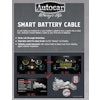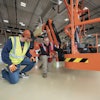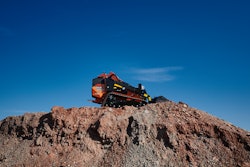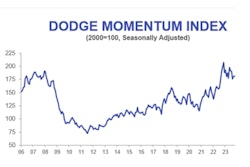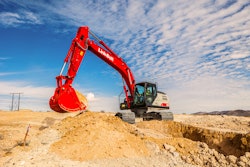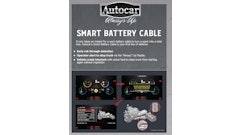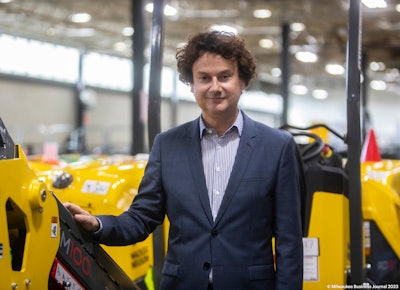
Equipment Today talked with industry leaders to look back at the challenges in 2023 and look forward to the New Year for the State of the Industry Report. In this Q&A, Gert Reichetseder, president and CEO, Wacker Neuson Americas, provides his insights on the state of the industry.
What was the construction industry’s biggest challenge in 2023?
In one sentence: the construction industry’s biggest challenge this year has been fulfilling high customer demand. From a more detailed perspective: despite a strong tailwind due to backlog orders, 2023 was a year that saw growing concerns related to inflation, labor shortages, energy/material prices and financial sector turmoil. This impeded the construction industry’s true growth potential.
However, strong market demand—fueled by infrastructure, energy, and industrial sector spending programs—increased construction equipment spending and demand.
Are changes in the workforce, including retirements, affecting your company?
Changes in the workforce are always an issue, whether recruiting for manufacturing growth or backfilling an aging employee base. While the loss of tribal knowledge is never easy, it is an opportunity to bring in new thought and motivation to an organization that can stimulate positive morale and evolve corporate culture. As retirement approaches, we encourage mentorship of up-and-coming employees by our experienced staff to help ensure continuity through change. However, Wacker Neuson in the U.S. is fortunate to leverage its 66-year tenure in the region with long-term employees being able to share their experience with new colleagues coming on board.
Is your company still experiencing fallout from the pandemic, including supply chain issues or other problems?
While inflation and supply chain constraints caused by the pandemic continue to affect Wacker Neuson, its impact has certainly decreased throughout 2023, as we adjust our product, supplier and customer strategies to match these challenges. Labor shortages continue to be a lingering issue left over from the pandemic that has proven to be a bit more difficult to overcome. However, to attract, train and retain the staff we need, we are taking steps to help alleviate this by initiating an apprenticeship program that is similar to that in Europe. This will help us expand and strengthen our factory team to support our continued growth, as we believe not only in hiring talent but developing and training our Wacker Neuson employees ourselves.
In what technological areas do you see the potential for the most innovation in 2024?
Engine and drivetrain efficiency, as well as equipment electrification, [are areas] of continuing advancement, as the Environmental Protection Agency tightens regulations surrounding off-highway … engines. These regulations frequently require manufacturers to advance designs and technology for diesel engines and drivetrains to be more fuel efficient, lower particulate matter, increase power density and be quieter than their predecessors.
When it comes to advances in battery-powered, zero-emission light equipment, Wacker Neuson has been a pioneer in compaction and concrete consolidation. We have developed a modular battery system for our products that is flexible, easy to use and becoming the most widely used battery solution on the market for light construction equipment.
Additionally, our first electric mini excavator will be available in North America in 2024. This 1.7-ton machine has been a success in the European market and represents the next phase in a long-term, zero-emission strategy for Wacker Neuson in the Americas.
What innovations or improvements do you anticipate in construction equipment in 2024?
Increased adoption and advancement of machine controls, digital control systems and machine telematics will continue to be a topic for equipment manufacturers. Improved automation of machine operation, accuracy and diagnostics not only allow operators to optimize the machines’ overall use, but also greatly reduce the skill set necessary to operate the machine creating a greater opportunity to increase the workforce during a time of labor concerns. We will continue to refine and expand our electric product offering. In addition to reducing emissions, Wacker Neuson’s battery-powered products are very easy to operate and maintain, putting fewer demands on the operator and our distribution channels.
Which construction sectors face the most hurdles in the move toward electrification? Alternative fuels? Automation?
Adopting new sustainable construction practices often comes with challenges. This includes much higher up-front investment, as well as a general fear of change. Projects in the residential sector typically encounter the greatest barriers, due to less profitable bottom lines and much shorter turn-around times to complete, which can sometimes negate the advantages of these new practices. To automate a process, you need to have detailed and accurate digital plans and layouts. Since every jobsite is different and changing [continuously], this poses the biggest hurdle for automation and digital construction becoming a reality on a bigger scale.
Do you expect the IIJA to affect your business or your customers’ businesses? How, if you can explain further?
Infrastructure spending generated by the Infrastructure Investment and Jobs Act (IIJA) will continue to be a key driver of construction industry growth in most regions across the U.S., especially as the number of projects and spending generated by the bill gains much more momentum heading into 2024 and 2025. This increase in spending and construction projects will result in an increased demand for construction equipment, expanding our opportunities in the marketplace.
What will be the biggest challenge in 2024 for the industry?
In an economy with sales channels and original equipment manufacturers filled with equipment and unfavorable foreign trade conditions throughout 2024, turning existing inventory will be an ongoing challenge. The bottlenecks and supply availability caused by the pandemic exposed many areas of weakness in the supply chain, including timely procurement for deliveries and efficient warehouse management. Improvement in these areas will be key factors in increasing productivity and driving down lead times to help return equipment availability to normal levels.
Are there any other insights looking toward 2024 that you’d like to share?
Wacker Neuson will be staging the start of assembly for excavators made in the U.S. We will be rearranging our assembly lines to accommodate this endeavor and optimize our logistics flow. To do so, Wacker Neuson will be investing a substantial amount into our Menomonee Falls facility to enable this growth. This is another important milestone and step to expand our market presence in the Americas region and to grow our market share in all our product groups.

